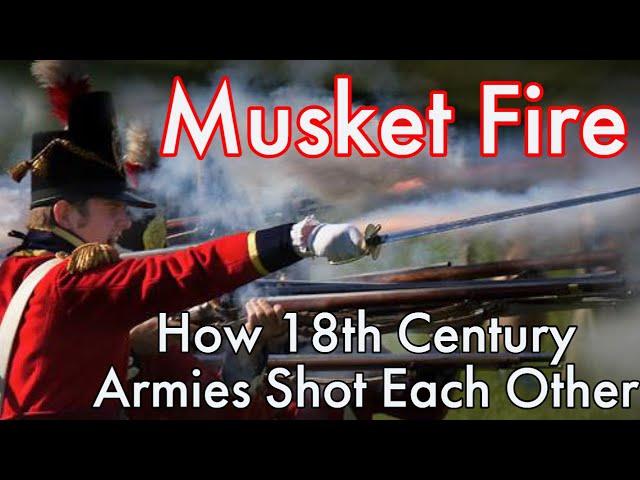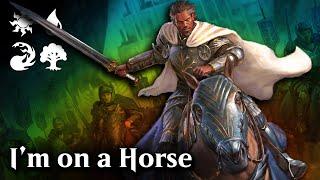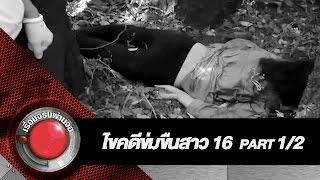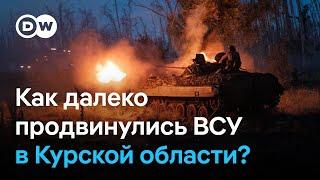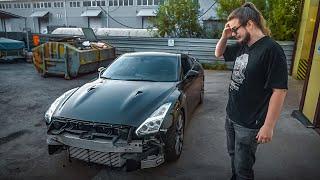Комментарии:

Fire by ranks absolutely existed in at least the French army from the mid-18th century on and likely in other nations as well. De Vault’s memoirs discuss the effectiveness of it, and it was briefly prohibited in the Instructions of 1776, only to be brought back in the Ordinance of 1788. The French would use the fire by rank that other nation’s used, as well as a unique type called fire by two ranks. De Vault says fire by rank was rarely used but was excellent as an anti-cavalry tactic in square, but had little use elsewhere. De Vault also mentions the former fire by rank is drawn up “as the other nations do,” which indicates that others certainly did it as well but he doesn’t seem to name who in particular, although I suspect the British may have also done it informally since he’s often comparing these other firing methods to the British. It was outlawed briefly in 1776 not because it was ineffective in firepower, but because officers noted that soldiers kneeling under fire were often too scared to stand up on command, and as such were far less maneuverable, unable to charge, and badly positioned to receive a charge if so many soldiers are kneeling and refuse to get up.
Essentially, how it would work in practice though, is the first rank would kneel while the second fired. Then the second would reload and then the first would fire while kneeling and so on. This way at least one rank was always loaded to fire on cavalry if needed and there’s no risk to shooting the kneeling soldier while he’s moving to reload because fire is held until reloading is complete. Fire by rank also doesn’t necessarily require the first rank to kneel and can still be done by leveling the musket over the shoulder of the first rank so it’s not as rigid as you’d think. The regulations went back and forth on which they believed to be better, and in some cases one would be outright banned only to be brought back for the other to be banned later. To quote specifically, “it is recommended, especially for the squares formed against the cavalry, the firing of ranks, in which each of the three ranks fires in turn, so as to produce instantaneous effects on the enemy cavalry, without ever being disarmed.”
To also quote Guibert, “Fire by one or more ranks is, I believe, the only proper form against cavalry and for the defense of an abatis, or of a post which the enemy would attack decidedly and with bayonet at the end of the gun, because it is the only one which gives, if I can express myself thus, a mass of fire able to stop and reverse great efforts; but it is necessary, as I say, to employ it only when the enemy is shaken for an attack of strong force, and to spare the control of this fire, so that the two last rows make their last discharge when it is has. twenty-five paces, and that the first rank reserves its own to do it at close range.”
Then there’s Marshal Davout who says positively about firing by rank, and also says volley and platoon fire must never be done against cavalry, “we must only fire against the cavalry in files or ranks. The file fire must begin at least 150 paces, and from the right of each section to feed the fire as the cavalry advances. We can only start firing at 100 paces and even closer, the ranks only firing successively, there are always two of them who have their guns loaded. This fire is very good against cavalry, when it is done with cold blood and great practice. The fires of battalions, half-battalions and platoons must never be used against cavalry, unless the infantry is covered by an abatis, a ditch, a palisade or an obstacle sufficient to stop the shock. In this case, these fires must be made at close range.”
If you can’t trust Davout, who can you trust? Napoleon’s best marshal, who never lost a single battle in his entire career, a man who could defeat entire armies with his single corps, possibly the best tactician of the era.
The fire by two ranks is slightly different where the formation is at a depth of three. The first rank kneels and never fires, but holds it for an emergency, while the rear two ranks fire just like a normal formation of depth of two would if the first kneeling rank wasn’t there, firing by battalion, half-battalion, or platoon depending on the regulation in place or at will.
The French also had a habit of firing by files in line and not just in a skirmish order from the 1760s and onward. The fire would roll across the company front as each file fired successively, and after the first fire it would dissolve into a fire at will where each soldier was instructed to fire deliberate aimed shots, preferably oblique to the enemy, believing at will fire was more accurate than volley fire. The only reason it rippled by file at the start was to keep the firing at will staggered across the front where someone would be firing and another reloading at all times. If it all erupted at once as an initial volley, there would still be a predictable rhythm to the at will firing with most firing around the same time and most reloading around the same time. Depending on the regulation in place at the time, the third rank may or may not fire, with the third rank being prohibited from firing in 1788, where they were instructed instead to reload fusils for the second rank. However the primary accounts indicate that the third rank typically still fired even after 1788 because soldiers don’t want to just stand there under fire and would typically fire against orders. The accounts also indicate that the third rank actually reloading fusils as instructed almost never actually happened because soldiers didn’t trust others’ weapons enough to function in combat and so they would often pretend to swap fusils without actually doing it.
This last part is explained by Captain Tansky, “These truths are so evident that they leave no doubt as to the disadvantage of the third rank in its present destination. I will even add, from my own experience, that a soldier does not have enough confidence in another's rifle; he dares not adjust, lest the butt strike him in the face, and it happened to me several times to notice that the soldiers of the second rank were only making a show of exchanging their guns with the men of the third, and always kept theirs.”
This is all in the regulations, the memoirs of De Vault, and among the theories of the “military philosophes” like Guibert or Pirch, and this is also summarized in “The Background of Napoleonic Warfare: Tactics of 18th Century France” by historian Dr. Robert Quimby.

Empire total war
Ответить
In my opinion, the best explanation of army tactics from the era, so excellent
Ответить
I think Suvorov's tactics is best for musket era. We have 2 types of infantry. One of them does a lot of firing, but they have huge gaps between soldiers thus allowing accurate fire on a densely formed unit while being relatively safe. If they get charged, they run away. If they meet cavalry, they run to linear infantry. Linear infantry was on the other hand barely trained to shoot. They would typically shoot once at point-blank range before engaging in melee which they were drilled into perfection.
He had a phrase the meaning of which is "bullets miss, bayonets- never". Its not an exact translation, but conveys the mean very well.

One of the recent service members who was killed was actually a fervent defender of the osprey on social media. Like made dozens of memes and posts defending the safety of the aircraft. Basically made a lot of the same arguments for the plane y'all did about it being the best and worst of both worlds so you put up with it, all aircraft are unsafe, operation is the problem not design, etc
Ответить
Bit Dangerous Periods.
Ответить
I saw Civil War reenactors firing by rank, in two ranks, starting with back rank though. You can do it in three ranks, but the front rank will be firing only once, hence they will be kneeling presenting bayonets to create barrier: 3-2-1-3-2.
Advancing infantry covers over 100 meters in less than minute and cavalry even faster. Despite reenactors insisting on the idea that you can fire 3 or 4 shots per minute, effective range for musket is within 80 to 25 metres. This means that you can fire up to two volleys: a preemptive volley and a desperate volley, none of which will be effective. Enemy can return fire whenever he sees fit. British infantry was considered best, being capable of taking aim and firing 3 ranks at once from 50-25 m followed by bayonet charge which usually routed the enemy instantly. Firing by rank prevents this scenario by steadily increasing casualty rate in advancing enemy as they close the distance to their optimal firing range thus disrupting their ranks (or assault columns). French and Polish during Napoleonic wars used firing by rank and relied on artillery support and push of bayonet during their assaults.
32132 is against cavalry with 3rd rank’s second shot at point blank range and 2nd rank’s second shot at the retreating troops. Once the attack is repelled the 1st have all the time in the world to reload without anyone shooting over their heads.

did the officer on horse really stand at the front... surely he would be destroyed immediately..
Ответить
Firstly love your channel, currently researching the Georgian era (for lack of a better term) for a project and wonder if you have any pointers on papers/reenactment research that has been done on efficiency of fire by frontage for efficiency of hits. As most experiments I've seen are on the individual smooth bore effective rate at range whereas I'm looking for actual effectiveness by mass. To give me a hit vs miss rate at long medium short range. Has any group just experimented against say a barn, and checked how many shots hit from a mass of muskets.. also another question, down slope fire. Is there an effective angle of attack that muskets just are useless at.
Much appreciated for any pointers

I can remember at Waterloo 200 when the 2nd battalion were volley firing when the officers were shouting commands for the far right as we were on the left by the time we heard the command the right were already at the make ready position.. good times
Ответить
the japanese during the sengoku period used firing by ranks i think
Ответить
Hi. How did a french column handel fireing during advancing?
From what I have read the original idear is that once they got close they would fan out in to line. But often they where crashed through.
So did they 'pepper pot' fire and move by sections? Or fire and peal. Or just not fire at all?
Thanks bud 🙂
Love the video and it answers some questions my son put to me that I only had a loose Handel on. 🙂

When firing by rank in about 1813-1815 Was Popular Because say if a horde of Zulus where coming at you well if you do 4 rank volley fire over and over again it we could the same distance for hours and hours until the rank stops the British and French have mainly used it but I don`t know much about it most of the times they would do 2 rank volley fire depending on where they where and if the enemy was in column or line and how many ranks the line formation was. I Also want to point out they done this in the battle of Rorke's drift but by firing by the sides like north wall, south wall, and this is one of the reasons why they succeeded in 1879. And if soldiers where trying to charge with bayonets after sometime they would give up are desert because there fellow at arms have you know died.
Ответить
I find it absolutely astounding this historian thinks firing by ranks is a myth.
Ответить
Something I noticed Monsieur F. fails to mention (albeit in a superb video) is the psychological effect of Fire by Platoon, Section, Division, etc. While Volley Fire was probably the SECOND-most effective (in terms of psychological punch to the enemy, esp. the deeper the ranks of the opposing front), Fire by Sections (as elucidated in 18th Century letters of veterans) was THE most debilitating, IN A PROLONGED firefight. The receiving line would undoubtedly sustain a major blow to morale (which IS the way battles are won) post-Volley, and hence this method was particularly favored by the British, for instance, just prior to the bayonet charge. However, in sustained firefights the psychological damage sustained from a rolling, continuous barrage of lead from the opposing line would prove devastating and period records declare how a Platoon Fire system (again, as employed by the British) would significantly SHORTEN firefights, particularly against relatively un-trained conscripts. THIS was the primary reason why competent British commanders favored the Platoon System, even as far back as Marlborough. In short, it worked THE BEST for breaking a foe, without the necessity of long, costly trading of fire. RULE BRITANNIA!
Ответить
I also thought of a firing by rank but with the first rank going to the back of the unit and relode while slowly advancing back to the first rank
I thought of this ispired by a combination of the rotation of fighter in roman legionaries midfight and the fact that with crossbowman it was usual praxis to have them in couples of two to three so one is always firing.
Just like the street firing you mentioned
But it seems im to outdatet

Excellent vdocuvideo. Thanks for sharing.
Ответить
Brandon....The length of your Advertisements are unacceptable. Hence the lack of my subscription. I am sure you really don't care.
That said, the video itself is actually quite useful. The reload speed was key, as was the discipline of the Troops. The British Army was significantly faster than the French for example.
I give suitable Respect to the contributors below, many an excellent points being made.

video is way too long
Ответить
My question is where do they get the people to replenish their ranks. To me it seems this kind of warfare was a very high cost of lives.
Ответить
Hi there, just stumbled onto this wonderful video you made, I must say I really enjoyed watching it.
If I were to give some Feedback I d say that I would have liked to see this topic related to actual battles where this tactics were used, like the Great Northen War, 30 years War and soo on.
Thank you for reading my comment❤

your commercials suck.
Ответить
"how did armies in the georgian era fight?"
like gentlemen!

I get the feeling firing by ranks would be more useful with smaller units. When everyone is within earshot of the commander but avoiding the issue of a full volley that leaves a dry phase without loaded guns. Firing by sections would easily outclass it once the group gets bigger. Basically by ranks if you have only one section, but if you have multiple sections, use those.
And the street firing idea to outbalance a bigger enemy force is basically what the greeks did against the persians. All those enemy soldiers are useless if they have to wait behind each other.

First volley at Bunker Hill. First volley at the Battle of New Orleans. Legendary first volleys. Plenty of eye witnss accounts.
Ответить
I wonder why there was no real practicality to the uniforms and no attempts to look intimidating, the uniforms look queer, I get it’s the fashion but it’s like sending todays troops out dressed for supper.
Ответить
Sheer unbridled idiocy.
....And this was called 'bravery' by fools who couldn't conceive of a better system of fighting.
If some regent had the foresight and ingenuity to develop and implement small-unit tactics, such as used in WW2, they would've routed every single engagement in the entire Georgian Era, at nearly no losses to themselves.
There are two or three key reasons Small-Unit Maneuvering wasn't implemented, all of which were due to Cultural Mores of the time:
1. Most rank-and-file troops were down-on-their-luck "Surplus Population". They already distrustful of their National Governments pre-conscription... conscription made that dislike worse... So Formation Tactics were used to - essentially - PEER-PRESSURE men into not fleeing and deserting, which would've happened en-masse without them.
2. These 'Peasant Conscripts' were presumed (whether correctly or not) by their aristocratic commanders to-be not wily, fit, nor intelligent enough to engage in the clever maneuvers required in Small-Unit Tactics, which would require squads to work flexibly within a master plan to rapidly reposition and skirmish around the battlefield in a semi-self-directed manner.
3. Due to the purely-political "Prince Versus Prince" nature of European conflict in that Era, armies were always raised as QUICKLY as possible. Basically zero training time was set aside for anything beyond Marching and Drilling. These "Instant Armies" necessitated the lowest-sophistication tactics, which would mean these "Line Tactics".
To form an effective Small-Unit Corps:
1. Army Logistics would have to be improved across the board... Soldier Registration Systems, Supplies, and Food Quality would have to be improved, and Uniforms (which were ferociously uncomfortable, heavy, over-decorated, provided NO weather-resistance, and offered ZERO protection from even a bayonet) would require a top-to-bottom rework.
2. Training Time and Quality would have to be vastly improved - something like modern boot-camp. A few months of hard-core, dedicated training would improve marksmanship, loyalty & cohesion, and give the troops the necessary mindset for shoot-and-move tactics. This would also give Officers ample time to train on the following point:
3. The corps' command system would need to be reworked, with the officers understanding the hit-and-run nature of their intended tactics, and that they were supposed to 1) constantly send runners back-and-forth to Central Command to receive / report the state of affairs and reposition based upon this information, and 2) to only keep the MAJOR blocks of the engagement in mind, moving their companies flexibly within at THEIR discretion.
Such an army would have been DEVASTATINGLY lethal in the ~17th-19th Centuries. It would've SLAUGHTERED these line-formations, with the only semi-effective counter being clever and aggressive cavalry units led by unusually courageous commanders.
In fact...... based on what I've seen in these historical videos.... most of the successful units did indeed employ these characteristics.

How can you have 'primary source' when everyone is long dead? You must mean credible 'secondary account'?
Ответить
Dude, rifles used to be longer to avoid the issues with friendly fire. Movies do not provide accurate enactments
Ответить
Oh yes when military budget is 90% uniform and 10% weapons
Ответить
Wow….you are so bad at this.
🙄🇨🇺🇺🇸

Here are some direct references on fire by ranks. Furthermore, similar technique was also used extensively in East Asia - by China, Japan, and Korea. This method was also used with cross bows, so the idea predates firearms.
Milicia, Discurso y Regla Militar, dating to 1586: "Start with three files of five soldiers each, separated one from the other by fifteen paces, and they should comport themselves not with fury but with calm skillfulness [con reposo diestramente] such that when the first file has finished shooting they make space for the next (which is coming up to shoot) without turning face, countermarching [contrapassando] to the left but showing the enemy only the side of their bodies, which is the narrowest of the body, and [taking their place at the rear] about one to three steps behind, with five or six pellets in their mouths, and two lighted matchlock fuses … and they load [their pieces] promptly … and return to shoot when it's their turn again."
"I have discovered … a method of getting the musketeers and soldiers armed with arquebuses not only to keep firing very well but to do it effectively in battle order … in the following manner: as soon as the first rank has fired together, then by the drill [they have learned] they will march to the back. The second rank, either marching forward or standing still, [will next] fire together [and] then march to the back. After that, the third and following ranks will do the same. Thus before the last ranks have fired, the first will have reloaded.[31]"
— Letter from William Louis, Count of Nassau-Dillenburg to Maurice 1594

Street firing was very popular in pike and shot warfare even on the battlefield.
Ответить
Firing by ranks is also definately a thing earlier. Standard dutch and english 17th century drill features fire by ranks, but instead of kneeling the original 1st rank after firing will retire to become the last rank. Ideally by splitting to the flanks of the formation. Obviously doesn't work with formations that are too wide/not enough gaps between the formations. Essentially identical to the street fighting technique.
Ответить
O My? how the Beast of Black Powder changes her Idea with the Weather!
Ответить
Watch the "Dances of the Day" keeping this In Mind? you may? have a New Out Look?
Ответить
Why is your Musket Sooo Long? "I" don't want to Blow "Your" head off!
Ответить
Fire by rank can be viable when you are being charged, so you dont intend to reloadand the front line will become your "cheap" pikeformation
Ответить
What about "fire at will?"
Ответить
To my untrained ear this just screams "experimental archeology": Get a battalion's worth of reenactors together, equip them with weapons and ammunition (or weapons and some kind of MILES, if the Health And Safety people are breathing down your neck), break out Ye Olde Instruction Manual and see what's what.
Ответить
But.. standing shoulder to shoulder must have implications on how hard companies are hit, right?
Ответить
I didn’t know I needed this. 🫡
Ответить
i'm no musket expert haha but just thinking it over i gotta say firing in separate commands would absolutely be way better than otherwise of something changes in the fight you will have a group ready to act instantly especially on larger scale but why not have men rush to the front fire reload i wonder maybe not as good as i think but still
Ответить